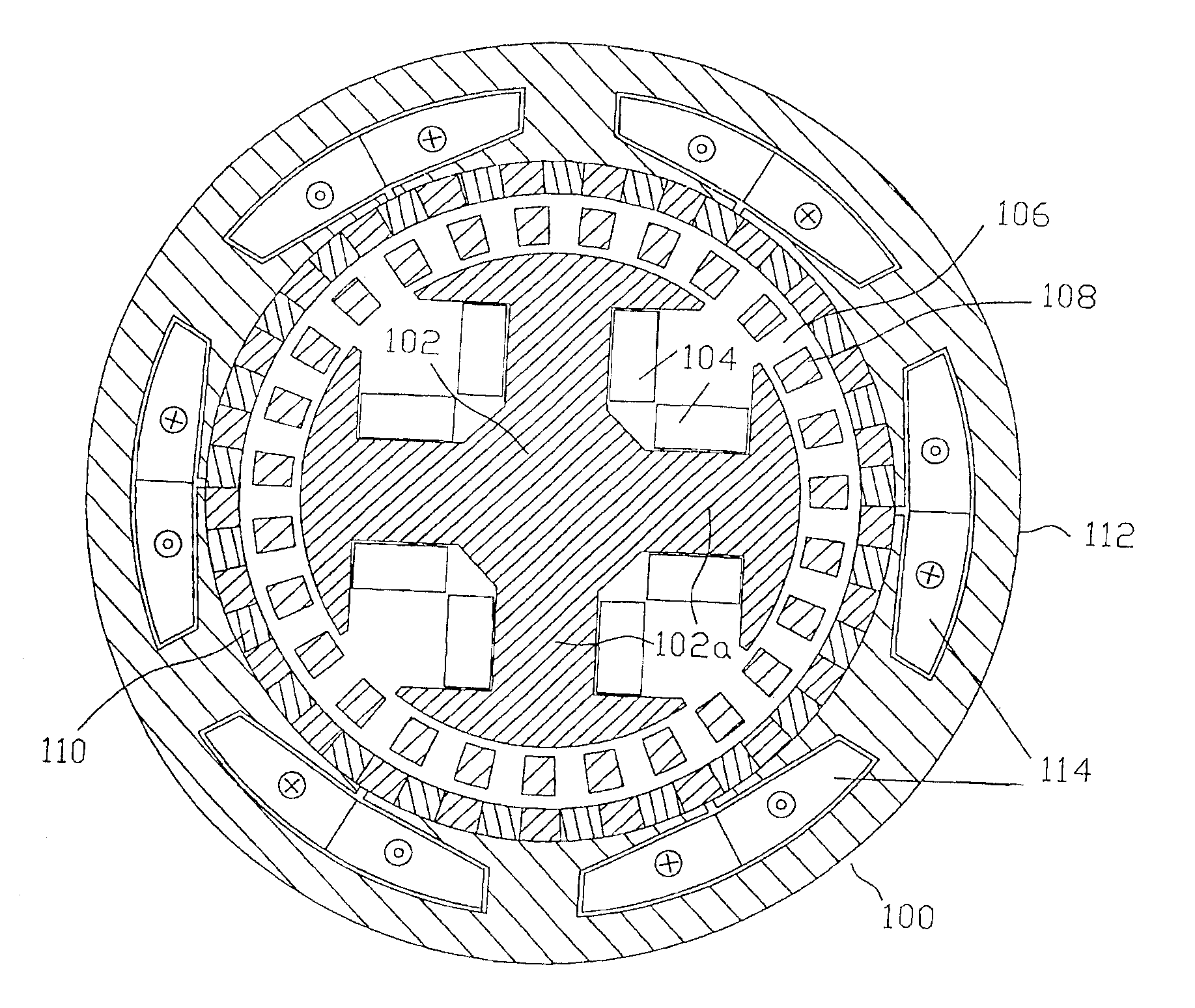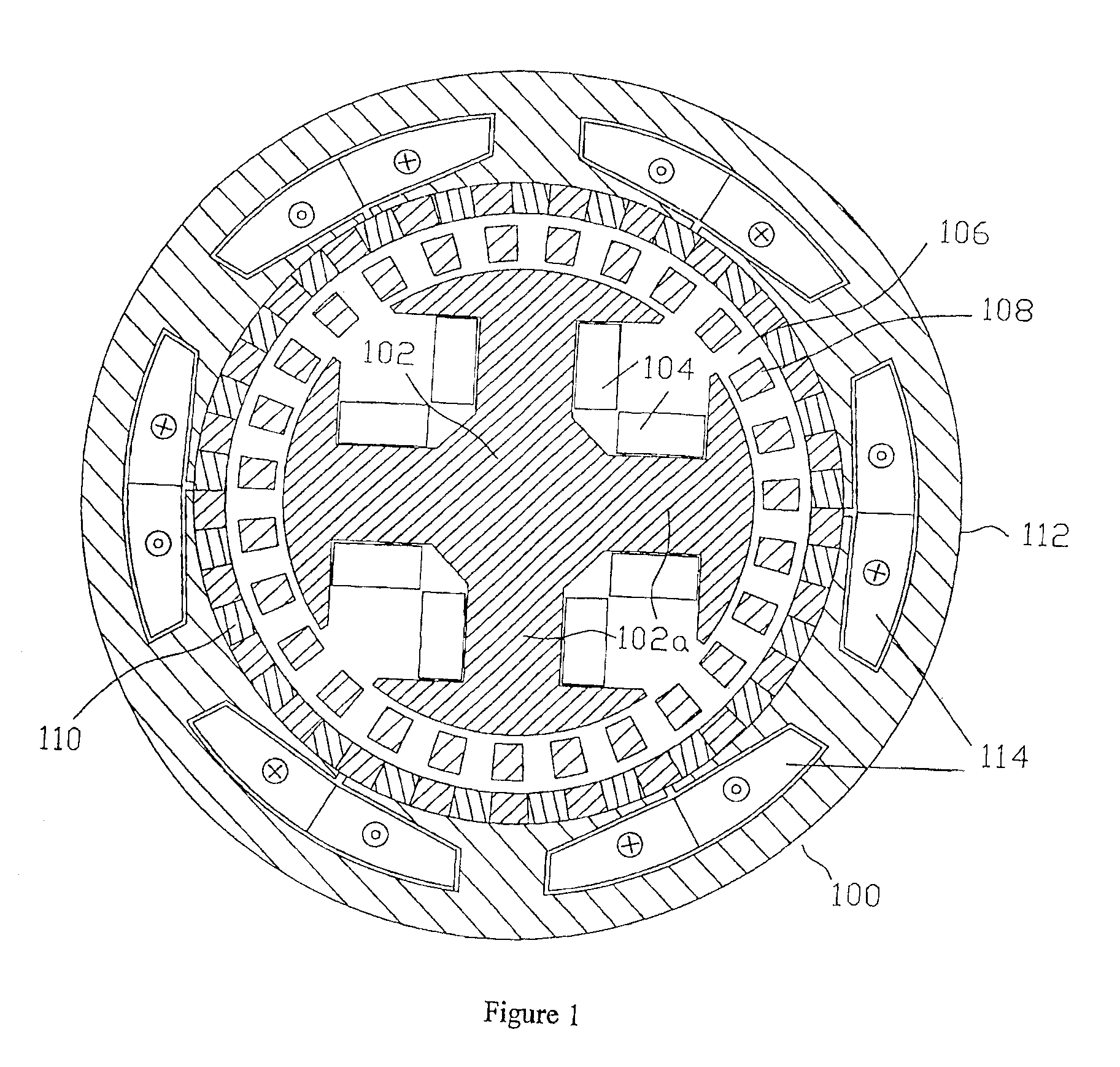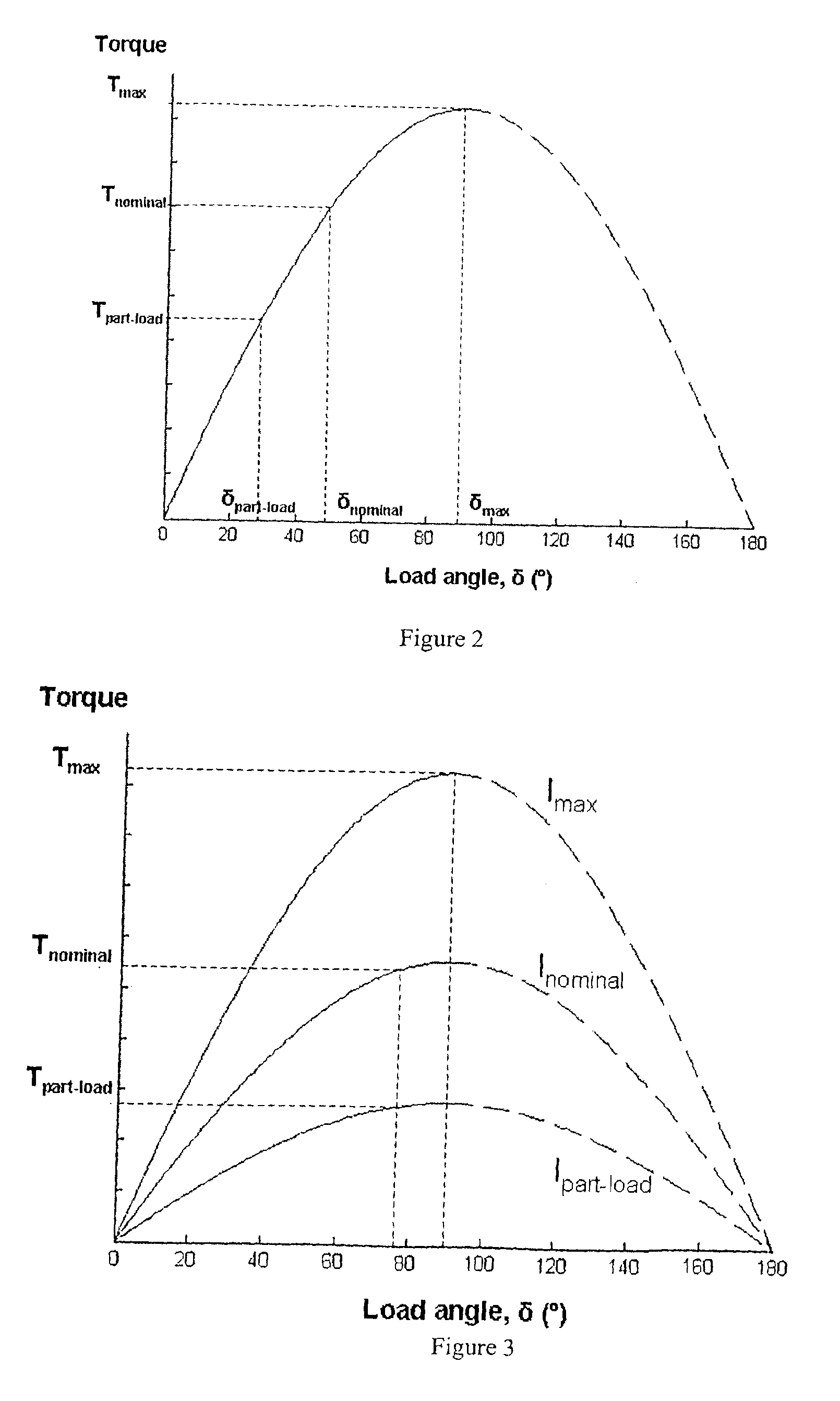Electrical machines
a technology of electric machines and converters, applied in the field of electric machines, can solve the problems of unsuitable electrical power generation, unsuitable for motor applications, and high converter volt-ampere ratings, and achieve the effect of large torqu
- Summary
- Abstract
- Description
- Claims
- Application Information
AI Technical Summary
Benefits of technology
Problems solved by technology
Method used
Image
Examples
second embodiment
[0047]The shown second embodiment comprises a winding which is configured to produce a magnetic field with 2 pole-pairs. However, it will be realised that other winding configurations which generate a different number of poles may be envisaged. The current supplied to the windings by a controller may be DC or AC. When the current is AC the magnetic field moves at a different speed compared to the mechanical speed of the rotor.
[0048]The second embodiment may be used in applications where the inner rotor 202 rotates at high-speed. This results from the inner rotor 202 being more aerodynamic than the corresponding design of the first embodiment.
third embodiment
[0049]FIG. 5 shows an electrical machine 300 according to a
[0050]The electrical machine 300 comprises an inner rotor 302 bearing a plurality of electrical windings 304 forming electromagnets, as in the first embodiment 100. In the illustrated embodiment 300, windings forming 4 magnetic poles are illustrated but some other number of windings forming another number of poles could equally well be used.
[0051]The electrical machine 300 comprises an outer rotor 306 bearing a plurality of permanent magnets 308. In the illustrated embodiment, permanent magnets 308 having 23 pole-pairs form part of the outer rotor 306. However, the outer rotor could produce a magnetic field which has some other number of poles. The electrical machine 300 comprises a stationary armature 310 bearing a plurality of pole-pieces 312 and a 3-phase winding 314. The number of pole-pieces 312 in the embodiment is 27, although some other number of pole-pieces 312 can be used in other embodiments. It should be noted th...
sixth embodiment
[0063]The present invention also extends to embodiments as described with reference to the sixth embodiment, but in which various components take up a different position in the machine compared to the embodiment shown in FIG. 8, i.e. the inner permanent magnet array 616 becomes the most outward component, the pole-piece array 612 is positioned inwards from the permanent magnet array 616, the high-speed rotor 606 is positioned inwards from the pole-piece array 612 and the stator 602 becomes the most inward component.
[0064]As discussed above, embodiments of the present invention are particularly suited to use with turbines which generate torque at varying power levels, such as wind turbines. FIG. 9 shows a wind turbine operating with an embodiment of the present invention comprising blades 710 for being rotated by the wind, a primary gear stage 720, although it will be realised that this is not essential, an embodiment of the present invention 730 arranged as an electro-mechanic gener...
PUM
 Login to View More
Login to View More Abstract
Description
Claims
Application Information
 Login to View More
Login to View More - R&D
- Intellectual Property
- Life Sciences
- Materials
- Tech Scout
- Unparalleled Data Quality
- Higher Quality Content
- 60% Fewer Hallucinations
Browse by: Latest US Patents, China's latest patents, Technical Efficacy Thesaurus, Application Domain, Technology Topic, Popular Technical Reports.
© 2025 PatSnap. All rights reserved.Legal|Privacy policy|Modern Slavery Act Transparency Statement|Sitemap|About US| Contact US: help@patsnap.com



